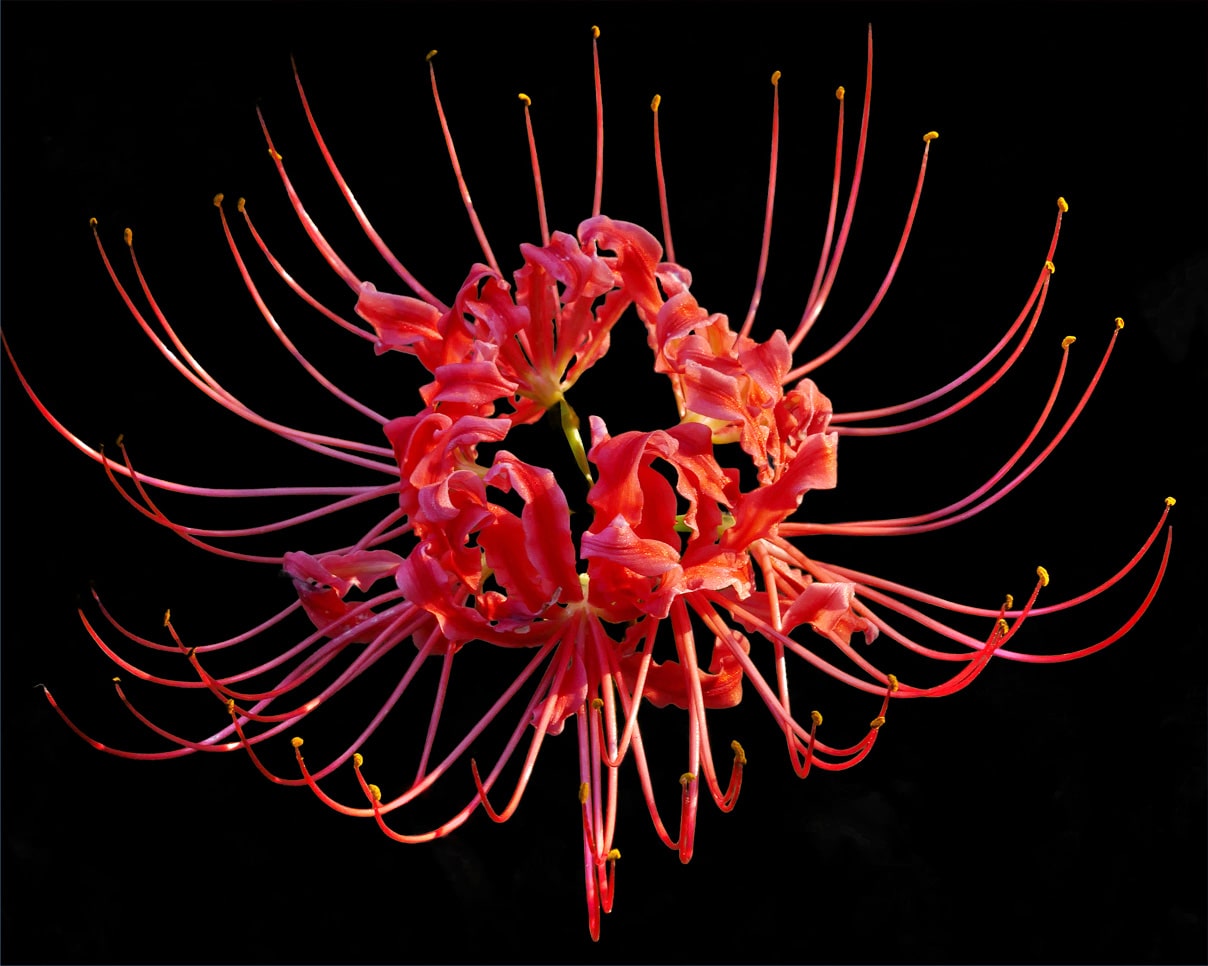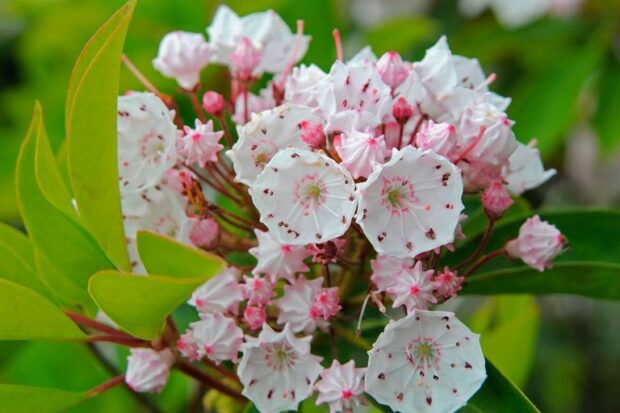The common name of both flowers is derived from the long tendril-like petals which are reminiscent of a spider’s legs, but that is where the similarity between these two flowers ends. Although both belong to the family Amaryllidaceae, they represent two separate species that originate from continents separated by thousands of miles of ocean. The most striking difference between the two though is their vast differences when it comes to their cultural meaning as well as traditional uses.
The Red Spider Lily (Lycoris radiata) is native to China, Korea, and Nepal. It has also been introduced throughout Japan the U.S. as well as other countries. They are considered hardy plants, which require little to no attention to survive. As such, they are a popular ornamental plant across the world. Being a late blooming perennial, the flowers usually herald the onset of autumn and the shift from summer into the colder, darker months.
The species is generally restricted to mild climates which don’t experience frost and thrives especially in areas of high soil moisture such as river banks or valley floors. In fact its bright red petals tend to color the landscape only after the first heavy rainfall of the season. For this reason, it is sometimes referred to as the Hurricane Lily or Resurrection Lily.
All parts of the Red Spider Lily are poisonous to humans and animals alike. Particularly toxic is the bulb of the flower which when ingested can cause vomiting, diarrhea, and in the most extreme cases paralysis or even death. Because of this dangerous quality, in China and Japan it was traditionally planted around cemeteries in order to ward off scavenging animals that may have been otherwise attracted to the smell of the buried bodies.
Most likely as a result of this, the Red Spider Lily has come to be closely associated with death, sorrow, and the afterlife in some Asian cultures. In Japan, for example, the flowers which are known as Higanbana, are often used as decoration at funerals. It also holds significance for Buddhists, who believe the bright red blooms act as a guide for souls transitioning to their next life.
In contrast to these morbid associations, the White Spider Lily (Hymenocallis littoralis) is a popular ornamental flower native to the warm climates of Central and South America. It has also spread widely throughout sub-Saharan Africa and graces gardens around the globe. This flower, often called the Peruvian Daffodil, thrives in warm, bright environments and generally grows near the coast. Not as hardy as the Red Spider Lily, it requires more care when grown in cooler conditions and in many cases is often better suited as an indoor plant.
The White Spider Lily is adored by gardeners the world over. It is particularly treasured for the sweet vanilla-like fragrance it produces as well as its elegant beauty.
But the White Spider Lily is more than just a pretty face, so to speak. Another intriguing attribute of the popular ornamental plant is its wide range of possible medical uses. For example, in 2018 scientists in Malaysia were able to successfully extract a methanol-based solution from the plant material.
When applied to wounds they found that this aided the healing process. The benefits of this could be a quicker healing time for the patient and the prevention of scars after healing is finished. Even more impressive than that is this flowers cancer-fighting properties., During scientific studies in 2008, extracts from the stem, root and bulb were found to contain antioxidant compounds which were found to be toxic to cancer cells. There is even evidence that this multi-talented flower contains bio-chemicals that are effective at repelling insects.
The Red and White Spider Lily are both beautiful flowers like magnolia flower and Zinnias flower, but culturally speaking they are worlds apart One is associated with mourning and cemeteries, while the other is used not only as a healing agent but also to bring light and elegance to a garden or living space.
Together they are an example of how apparently similar flowers can hold vastly different meanings to the cultures familiar with them.







